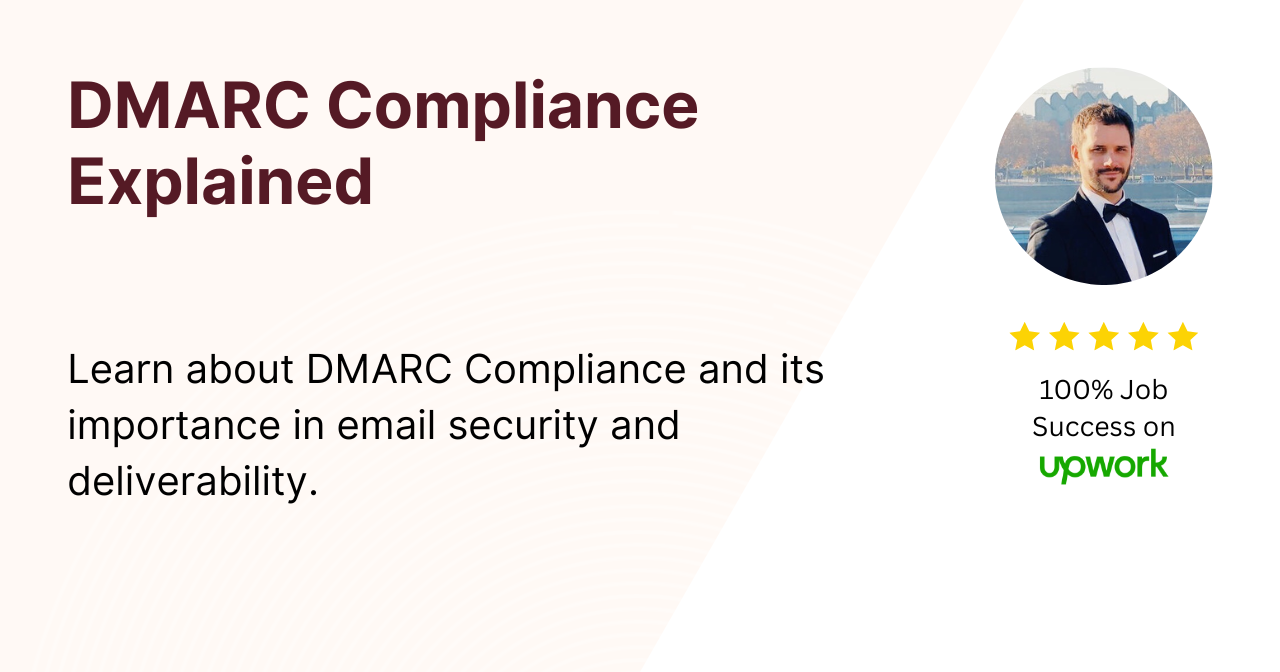Email has become an essential tool for business communication, making it necessary to ensure that email delivery is reliable and secure.
One way to achieve this is through Domain-based Message Authentication, Reporting & Conformance (DMARC).
DMARC is a protocol that uses SPF and DKIM to authenticate emails and provides reporting capabilities to help organizations protect their brand and reputation.
This article will explain DMARC compliance and how it can help your organization protect against email fraud and phishing attacks.
What is DMARC?
DMARC stands for Domain-based Message Authentication, Reporting & Conformance.
It is a protocol designed to provide email domain owners with the ability to protect their domain from unauthorized use, commonly known as email spoofing.
DMARC is built on top of Sender Policy Framework (SPF) and DomainKeys Identified Mail (DKIM) to provide a comprehensive email authentication system.
How does DMARC work?
DMARC works by authenticating emails using SPF and DKIM.
SPF verifies that the email message was sent from an authorized IP address for the sender’s domain.
DKIM verifies that the email was not tampered with during transit and that it originated from the authorized sender.
When an email is sent from a DMARC-compliant domain, the recipient’s mail server checks the SPF and DKIM records to ensure that the email is not forged.
If the email passes both checks, it is delivered to the recipient’s inbox.
If the email fails either check, the recipient’s mail server can take appropriate action, such as sending it to a spam folder or rejecting it altogether.
Why is DMARC compliance important?
DMARC compliance is important because it provides a way for organizations to protect their brand and reputation against email fraud and phishing attacks.
Email fraud and phishing attacks can cause significant financial and reputational damage to businesses, making it crucial to protect against them.
DMARC compliance also helps to increase email deliverability by reducing the likelihood of legitimate emails being marked as spam.
By implementing DMARC, organizations can ensure that their emails are delivered to the recipient’s inbox, reducing the chance of email bounce rates and improving overall email deliverability.
How to achieve DMARC compliance?
To achieve DMARC compliance, organizations need to implement SPF and DKIM records and publish a DMARC policy.
The DMARC policy tells email receivers how to handle emails that fail DMARC authentication.
There are three possible DMARC policies:
- None – This policy allows you to collect DMARC reports without taking any action on emails that fail DMARC authentication.
- Quarantine – This policy instructs email receivers to quarantine emails that fail DMARC authentication.
- Reject – This policy instructs email receivers to reject emails that fail DMARC authentication.
Organizations can start by implementing a “none” DMARC policy and gradually moving towards a “reject” policy once they are confident that legitimate emails will not be affected.
Benefits of DMARC compliance
There are several benefits to DMARC compliance, including:
- Protects against email fraud and phishing attacks
- Increases email deliverability and reduces bounce rates
- Provides reporting capabilities to help identify email spoofing attempts
- Improves brand and reputation by ensuring that emails are authentic and secure
Conclusion
DMARC compliance is an essential tool for protecting against email fraud and phishing attacks.
By implementing SPF, DKIM, and DMARC, organizations can ensure that their emails are delivered securely and reliably.
DMARC compliance provides a way to protect against email spoofing, increase email deliverability, and improve brand reputation.
FAQs
- What is email spoofing?
Email spoofing is the practice of sending an email from a fake email address or domain with the intention of deceiving the recipient. - What is SPF?
Sender Policy Framework (SPF) is a protocol used to authenticate emails by verifying that the email was sent from an authorized IP address for the sender’s domain. - What is DKIM?
DomainKeys Identified Mail (DKIM) is a protocol used to authenticate emails by verifying that the email was not tampered with during transit and that it originated from the authorized sender. - What is a DMARC policy?
A DMARC policy tells email receivers how to handle emails that fail DMARC authentication, including whether to reject, quarantine, or take no action on the email. - How can I implement DMARC for my organization?
To implement DMARC, organizations need to implement SPF and DKIM records and publish a DMARC policy. It is recommended to start with a “none” policy and gradually move towards a “reject” policy once confidence is gained that legitimate emails will not be affected.
